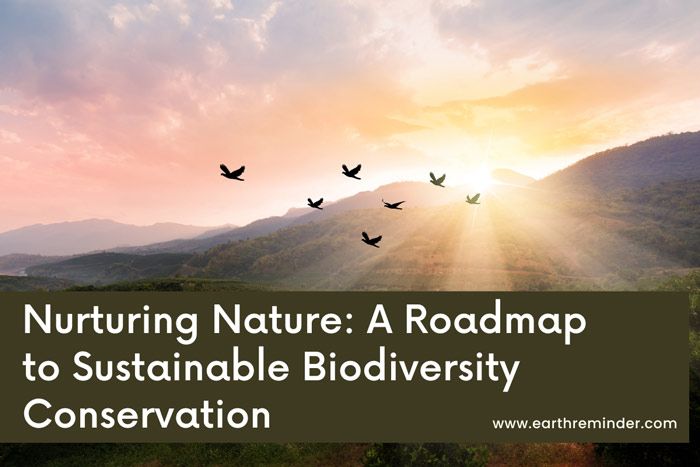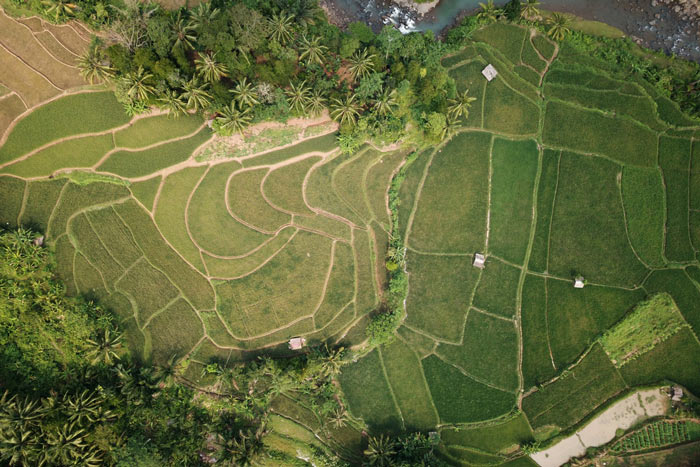Nurturing Nature: A Roadmap to Sustainable Biodiversity Conservation
Within the intricate fabric of our world, nature writes a tale of interconnectedness, strength, and invaluable beauty. Nevertheless, the complex pressures of human activities and the quest for development ruin this balance. At this time, we stand at a crossroads; the principle of sustainable development becomes a foremost priority, seamlessly melding human progress with biodiversity preservation. In this study, we look at the essential issue of biodiversity conservation and reveal its value and ways of practical preservation of the abundance of life that surrounds us.
Table of Contents
Why Biodiversity Conservation Matters?
Biodiversity preservation holds a profound importance in environmental science and conservation. This is where we analyze the multifaceted factor of biodiversity conservation.
The intricate biodiversity network is important for stabilizing ecological systems and human well-being. In the quest to understand the interplay of species and ecosystems, it becomes clear that biodiversity conservation is not only about environmentalism but a prerequisite for our collective welfare.
Additionally, in the spirit of academic excellence, students are reminded that seeking professional help from online writing sites like https://payforessay.net/ can be a lifesaver when overburdened with academic work. This boosts your chances of attaining academic goals and securing time for other errands.
Ecological Stability
Immerse yourself in a detailed examination of biodiversity’s key function in creating and maintaining ecological stability. Nested within the complex network of life, multiple ecosystems appear as self-organized systems, resisting and withstanding variations in the environment.
This flexibility also incorporates security against natural disasters, diseases, and the effects of climate change. Our in-depth exploration reveals that life patterns are integrated and interdependent; we pointed out that disturbances in one area are reflected across the entire system.
This connectivity brings home the urgent need for us to have a wide variety of species as insurance against our ever-changing environment’s challenges.
Economic Value
Step into the vibrant terrain where biodiversity is woven with economic development, revealing how nature upholds industries and well-being. Apart from its innate ecological importance, biodiversity provides economic value, fueling many areas of human activities. There’s a lot to learn about the economic implications of drugs, from plant compounds to the valuable pollination services insects provide.
Biodiversity conservation does not just portray itself as an environmental issue but as a protection of invaluable treasures needed to maintain a healthy and thriving economy. We’re trying to figure out how to use the complex network of biodiversity conservation as a driving force behind an adaptable and lasting economic system that withstands the test of time.
Human Well-Being
Biodiversity directly influences human welfare in terms of essential ecosystem services. Clean air and water, fertile soil, and disease control are tightly coupled to the diversity of living beings. Hence, conserving biodiversity is a way of ensuring that present and future generations are healthy and well.
Cultural and Aesthetic Value
Biodiversity forms the basis of cultural identity. Whether land-based practices or the aesthetic appreciation of diverse landscapes, human life is enriched by biodiversity. The essence of conservation lies in preserving such cultural and aesthetic values, enabling communities to have a deep sense of association with the natural environment.
Climate Change Mitigation
Biodiversity is essential for climate change adaptation. Forests, swamps, and seas also absorb and store large amounts of carbon dioxide, reducing the effect of greenhouse gases. Maintaining biodiversity is part of securing these natural carbon stores and mitigating climate change.
Actions to Mitigate Biodiversity Loss
Here are some practical ways to realize biodiversity conservation. Here’s where you can take action to save biodiversity around the world. From sustainable practices to community engagement, we trace practical solutions to benefit individuals, communities, and organizations. Be part of turning environmental education into working programs toward a healthier world.
Protected Areas and Reserves
The establishment and proper management of protected areas and reserves is a critical part of the process of biodiversity conservation. These areas create a refuge where different species can live harmoniously, free from unnecessary interference.
Sustainable Land Use Practices
We venture into sustainability practices, and our expedition stretches to agriculture, forestry, and land use. The purpose of our promotion of sustainable practices is to limit habitat destruction and fragmentation.Implementing methods that integrate conservation with production aims to forge a symbiosis between human aspirations and ecological well-being. Together, let us peel back the layers of sustainable land use and discover how they protect biodiversity.
Community Engagement and Empowerment
In conservation initiatives, we go beyond theoretical concepts and emphasize the importance of local communities. We focus on developing a feeling of ownership and responsibility among community members in our discussion. Effective participation of these communities in managing sustainably used resources is important, as biodiversity conservation matches closely with the needs and hopes of those affected.
Biodiversity-Friendly Policies
In the extensive realm of biodiversity conservation, the role of governmental and organizational policies is crucial. We analyze the rationality behind implementing policies that focus on biodiversity conservation. Our study covers laws that promote biodiversity conservation, responsible use of natural resources, and harsh penalties for violations. Come with us as we deconstruct the detailed fabric of policies that govern the whole protection of biodiversity.
Education and Awareness
Biodiversity conservation is a profoundly transformative power of education and awareness in our comprehensive analysis. The recognition of the importance of biodiversity is the first principle for sustainability.
Our discussion proceeds through the layers of educational initiatives and awareness campaigns at all levels to nurture people to make the right decisions. It entails encouraging sustainable consumption, ethical tourism, and responsible wildlife interaction. Let’s untangle the educational fabric, which cultivates a fear of biodiversity and sparks meaningful conservation participation.
Conclusion
In the fabric of nature, every species, regardless of size, is a character in our planet’s complex and glorious life story. The call for the conservation of biodiversity sustainably reverberates not just as a duty but as a shared responsibility to protect gifted diversity.
Walking the path of sustainable development, let us proceed with care, fully aware of the deep interdependencies that define our planet. By implementing concrete conservation efforts and acknowledging how biodiversity benefits us, we can guarantee a harmonious world where humans and nature live together. This ideal is possible to attain together.

